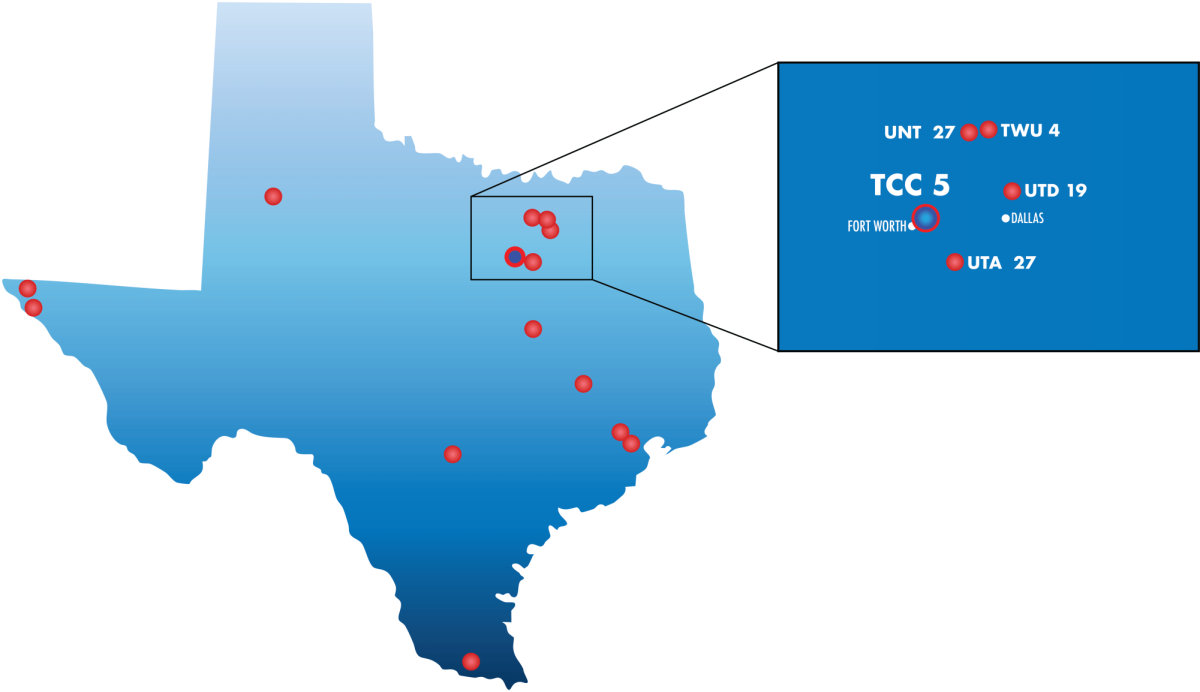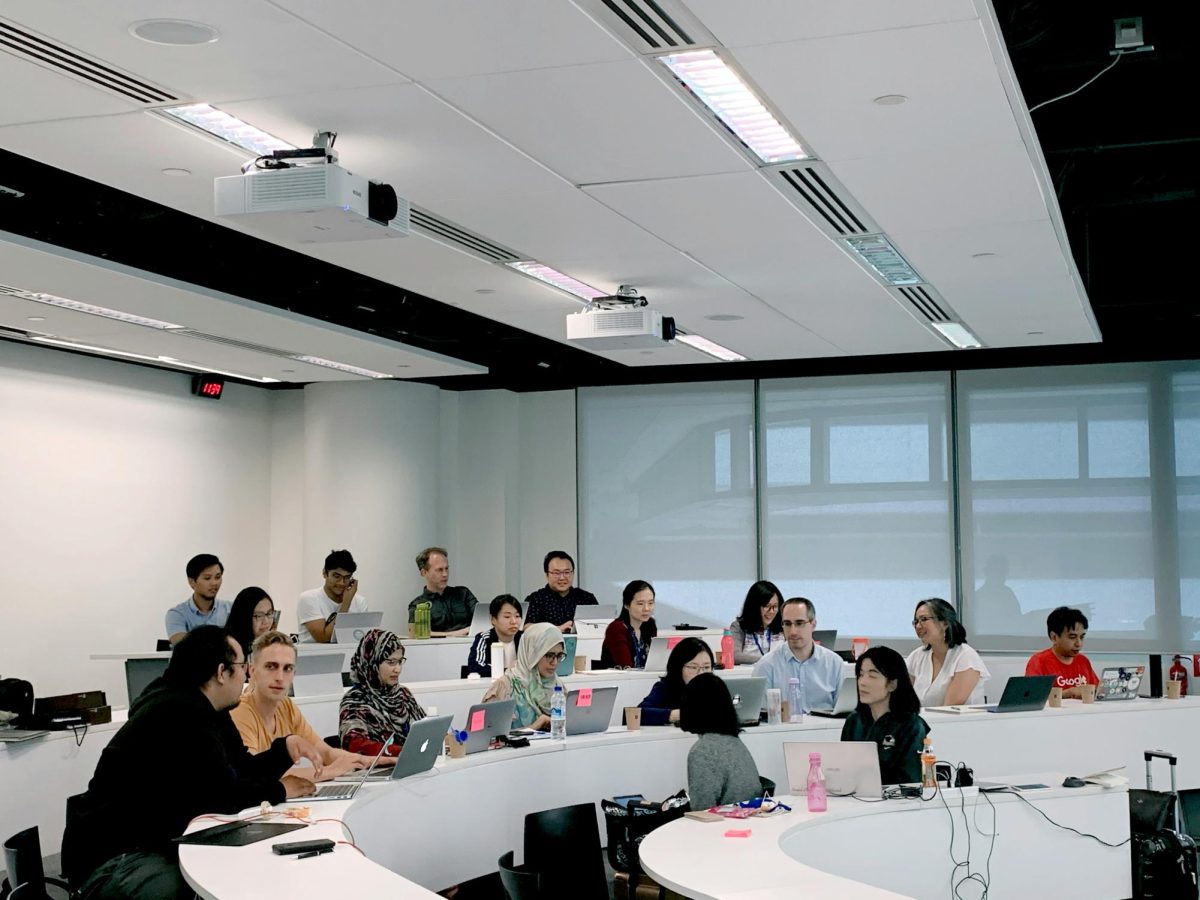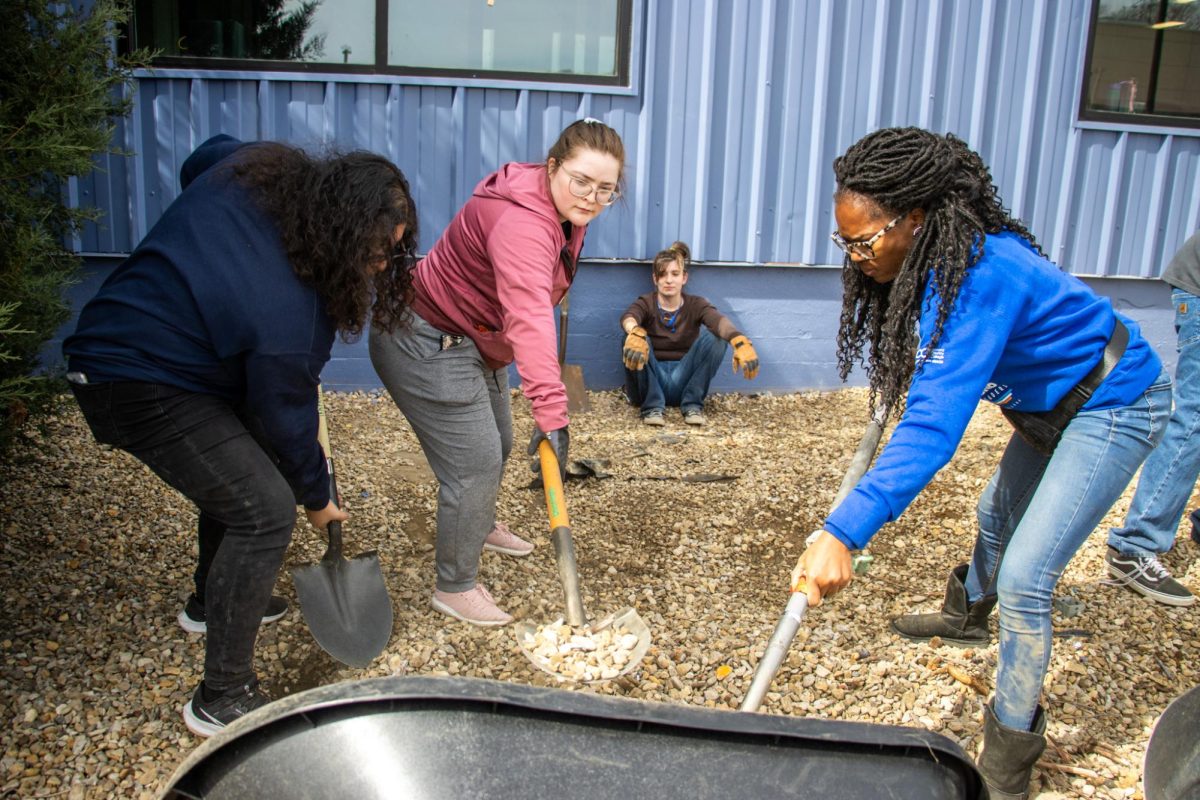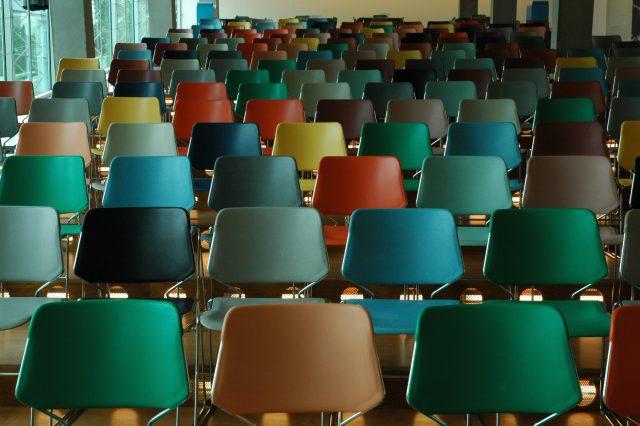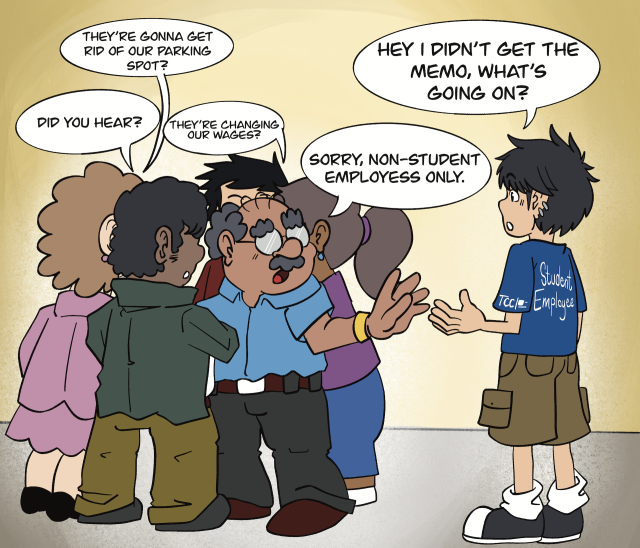OLLA MOKHTAR
campus editor
olla.mokhtar@my.tccd.edu
Imagine being without comfort. Being without safety. Being without water.
These are all things the first event of the “Real Stories” series concerning college homelessness and basic needs insecurity addressed Nov. 9 in a collaboration between CN’s faculty and CoAct, a nonprofit organization focused on the solutions for modern challenges.
Jesse Herrara, executive director of CoAct, said that the pandemic has limited their access to current data. However, according to a 2018 Trellis Research Student Financial Wellness Survey for TCC, 32% of students showed signs of very low food insecurity and 52% of students showed signs of housing insecurity.
Richard Miller, Connect associate professor of art and one of the organizers of the event said one of TCC’s deans introduced him to CoAct. He then noticed that many faculty members are aware of isolated incidents of college homelessness and basic needs insecurity but not the gravity of it.
“You’re familiar with a story here and a story there but you never really made the connection that these are isolated things, that it’s more widespread than we ever thought,” he said.
Miller said he also met with students affected and hearing their stories motivated him to do a presentation, art exhibition and panel discussion with CoAct. As a result of their efforts, they received a $300,000 Basic Needs Insecurity Grant that aimed to raise awareness and attention to the issue.
As the project coordinator, Ashley Munoz said the basis of the project is to draw awareness to college and youth homelessness and empower people in their positions to be able to create that change, even if it’s the smallest thing through an art gallery.
She said that the difference between being homeless and having basic needs insecurity is that homelessness is being without a home and not necessarily a house. She said there is often a uniform view on homelessness and basic needs insecurity, though both can intersect, a homeless student’s experiences are unique, she said.
“When we talk about homelessness, who do you picture?” She said, “A lot of times you see someone standing on the side of the road, you see the tents, you can spot them all over town. But if you focus on our population that we’re targeting, which is college students, and youth, being without a house may not necessarily be the same thing,” she said. “They have a place to stay, the homelessness aspect again, ties back to the support system. To their basic needs being met.”
To begin, a spin on the popular game “The Game of Life” was played where each roundtable was given three scenarios of students experiencing homelessness and participants were tasked to pick the best scenario for them.
CoAct volunteer Serena Grant said that the most important thing to take away from the activity and the whole event was that the students are a collective of human beings experiencing similar scenarios, but also very different ones.
“It’s to think about what you might be feeling if you have to make those decisions,” she said. “It’s so that you can look at it and have a more intimate perspective and to build sort of an emotional connection to that experience. It makes it more real.”
She said the co-founder of “Real Stories” presented the idea and altered the game to be about the series.
“It also humanizes the situation. Because sometimes when we think of homeless people, we have this image that’s so far removed from maybe what we see in our families. But what about the girl that sits next to you that you talk to every day? She’s experiencing that too.”
As a daughter of teen parents, TR student Jasmine Chavez said she remembers being four-years-old and moving around a lot. She said her parents avoided saying they were homeless but that they were constantly moving from house to house.
“[I was] very scared. [I was] just wondering what’s gonna happen next, or where we’re going to move to next. Do we have another house or are we staying here?” She said.
Growing up, Chavez said she didn’t hear much about resources regarding homelessness.
“All sources that I hear about now are food wise and where you can find them, like cheaper housing supplies. I feel like it should be for any age, because anybody could be experiencing homelessness.”
Likewise, TR student Courtney Sehlesinger said she experienced both homelessness and being without a house. Though she has some support, she said she still feels alone and like she doesn’t have anyone to depend on.
“It’s like a rude awakening.”
Sehlesinger said she doesn’t know of the resources offered by TCC and that a lack of effort is to blame.
“I feel like they do have opportunities. But at the same time, I don’t feel like they’re advertised enough. And a lot of people miss out on them. I know they have papers up but I feel like that’s not enough.”
She said she tries to have a positive outlook on her situation but that even for her it’s sometimes hindered because it’s hard to ask for help.
“I know most of the time it’s either anxiety or they’re just afraid of what others think,” she said. “Because I’m like that sometimes. Sometimes I just gotta have a thing of confidence or, or in my head I’m like, I need this, so it’s more of them just trying to do it for themselves.”

